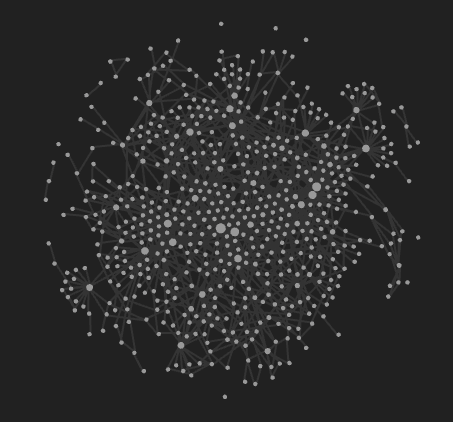It's all happening
This week, like any now, has been full of interesting and challenging things going on. I’ve made two trips up to London to try to finalise my handover at my last job, but that hasn’t been going so well for some ‘circumstances-beyond-our-control’ type reasons. Nonetheless, I’m having the smallest leaving drinks possible tomorrow evening, which, even with the size limits, I’m not sure is super wise.
It’s within government guidance, but as we’ve seen over the past 6 months that has hardly been ahead of the curve. I’ve been ranting about the government response more and more frequently, and with less and less provocation recently. I think the most recent news cycles that have taken CCHQ talking points regarding the COVID-19 situation have started to really get my goat. It’s partly as a 24 year old that I don’t like to feel maligned when the government incentivises everyone to go out and spend money throughout the summer, and then tries to pin the blame for rising case numbers on anyone under 30. It’s also that framing of the response to this being in the hands of individuals, which is the Conservatives continual refrain, that has me grinding my teeth a lot. Public health issues require public approaches. The 10 years of austerity have already done irreparable damage to our preparedness for a pandemic like this, and a lot of the investment is too little too late. The Conservatives continue to drive young UK trained doctors out of the profession, while making it more difficult for healthcare workers to immigrate from abroad. It’s hard not to see it as an attack on public services for the public good.
Anyway. This is equally just armchair policy advising, and maybe my guilt at wanting to see a few people for a drink. The fear of making choices, and those choices having consequences.
—
Either way it’s good to put a cap on what has been a very important period of my life, two years of good challenging work at the first job since finishing my undergrad. I’m very excited to be submerging into the world of Academia for the next 12 months. It’s something I’ve been missing in my life, to be able to spend time around people engaged in academic problems. Also I haven’t really touched mathematics since I finished my A Level in 2013, possibly my Physics A Level the year after. Either way that’s 6-7 years of not doing anything scientifically challenging. I’m really excited (and mildly terrified) to get my teeth into those problems again.
I’m signed up for some interesting sounding optional modules in semester two, AI, Reinforcement Learning, and Cryptography. The latter two definitely will stretch my maths back to where it was and probably further. I might have a difficult Christmas break but that’s what the course is for. We’re in the middle of the introductory teams meeting maelstrom, which does not combine well with trying to hand over a full time job effectively, but it’s been great to put some faces to names.
Once the course starts next week I’ll finally have more to talk about in terms of what challenges are going on, what I’m having to learn, etc. For the past few weeks I’ve been trying to brush up on my maths, particularly all of the foundations that allow you to solve linear equations using matrices. The HELM Workbooks have been great for this. It’s also been stretching out my skills in MathJax as I try to keep my notes in Obsidian, which uses MathJax for its mathematical rendering.
Obsidian is a fantastic tool too. It’s a relational knowledgebase software, one of the many that have sprung up. This means that like a website, your notes can link together, and develop importance by how connected they become. I’m planning to use it for all of my studies throughout the year. What I like about Obsidian is it’s essentially a really nice wrapper and interface to markdown files. So all of the underlying data is kept in a folder of markdown files, which you can store anywhere, do whatever you want with. Unlike Evernote, or apple notes, there’s no closed source database. I know my data is extremely portable because I can still see it and interact with it in plain text. If I ever want to run any analysis with it, or switch to another system, it’s super easy. Also the feature support in Obsidian is pretty amazing, despite it still being in an open beta. The only thing they do need to improve is the speed of the graphing, but that’s difficult to do in an electron app that still relies on JavaScript to perform all of the rendering.

Speaking of JavaScript and rendering, I’ve also been amazed this week by some generative art made in p5.js. I came across this work by Kjetil Golid, it looks a few years old but I really love the things that he’s done with some incredibly small JavaScript files. All of his work on the site is open source under the MIT License, so you can see how he produced these incredibly cool pieces, and then edit and tweak them yourself. At the moment I only understand how to edit a few simple parameters of some of them, like canvas size, or I can find and edit colour values. I’d love to wrap my head around how these are properly generated, and the mathematics behind them though. A lot of incredible randomness to produce beautiful pieces.

—
Reading List
- Web design and carbon impact . I also really like Steven Messer’s article on this. I borrowed (stole) a lot of ideas from him on setting this site up, Weeknotes and even the default Jekyll Minima theme. I might change the theme down the line, but only to something suitably lightweight?
- The social dilemma and the issues with it The worrying kind of film like this. There are academics and individuals who have been ignored for years, then you invite the people who fucked it up to talk about fixing it
- “Ministers and their advisers want more unchecked power but the executive is not competent at using the powers that it has” — The FT this week on constitutional issues with the govt
- No script is too simple, good principles for developing projects. Definitely something to bear in mind for me.
- Firefox usage decreasing and Mozilla exec pay increasing. While I’m not really in that world, I find NGO management a really interesting topic. I’m a big user of Firefox, and it’s sad to see the decreasing usage trend continue.
- Bleeding edge tech means you’ll bleed to death. Interesting article about trying to carve out an entirely new market for a service people haven’t heard of.
- Sniffer dogs are strange magic, and how they’re helping detect COVID-19 at some airports in Helsinki.
- A namespace for the decentralized web, this isn’t something I’ve actually thought that much about. Centralised authorities and the issues with them are not super high on my priority list, but it’s very interesting reading.